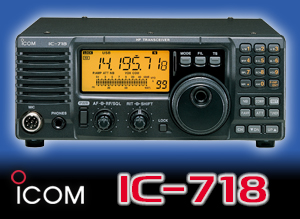Propagation News – 3 August 2025
Last week was very much a repeat performance of the week before. We had relatively calm geomagnetic conditions and few solar flares to contend with. The only flares were minor C-class events.
The Kp index never got above 3 and the solar flux index was in the 140s to 150s.
The F2-layer maximum usable frequency over a 3,000km path rose to 21MHz but didn’t really get much higher, which is normal for the summer period.
A team from Norfolk Amateur Radio Club was active as GM0FRT/P from the Shetland Islands for the IOTA contest. They were workable from JO02NN on 14 and 21MHz for much of the contest period. The distance to Shetland from central UK is about 887km, or 551 miles. Given the distance involved, the 21MHz openings were probably Sporadic-E, but they were loud for hours on end.
Other DX worked last week included T30TTT from Western Kiribati [KIRIB-ASS] on the 10m band using FT8 over the North Pole. 9M8A from East Malaysia was also on the 10m band using FT8. XW4KV from Laos was on the 12m band operating FT8. 3B9SP on Rodriguez Island put in an appearance on the 17 and 12m bands using FT8. The station was also worked using CW on the 40, 30, 20 and 15m bands.
That’s not a bad haul for summer DX and, if the Kp index can stay low, we could get similar next week.
Speaking of which, NOAA predicts that the solar flux index will be in the range of 150 to 160 next week. Unsettled geomagnetic conditions are forecast for the period of the 7 to the 14 August, with a maximum predicted Kp index of 5.
And finally, there is talk of a possible large sunspot group on the far side of the Sun.
The region in question actually belongs to a cluster of spots including AR 4136, 4139 and 4143, last seen earlier this month. Solar rotation will carry what remains of these regions back into view next week. So, keep an eye on solarham.com for up-to-date details.
VHF and up
The slightly unsettled theme to the weather will remain into next week, although there are signs that high pressure will try to return in the middle of the week for a time.
Models are disagreeing on detail with some bringing another thundery low into the south later. This means that there will be some Tropo at times and, in high summer, this tends to be generally strongest around the coasts. To benefit from these conditions inland it’s better to wait for night cooling.
As usual with thundery weather, it’s a good chance to listen for rain scatter on the GHz bands. Another mode that still deserves attention is meteor scatter. Look out for the early stirrings of the August Perseids which peak around the 12 and 13 of the month.
Surprisingly, Aurora is staying in the limelight. Periodic alerts are suggesting it’s worth turning your VHF beams north if you notice any signs of fluttery HF signals or discover the Kp index has risen to 5 or above. If auroral activity appears on the 10 or 6m bands, then check the higher bands as the event develops.
Sporadic-E is now in its occasional phase as we move into August. It is less common than in June, but still worth considering. Check the usual cluster maps and Propquest to see how the day is unfolding.
Moon declination is negative, falling to minimum on Tuesday the 5 August. So, Moon windows and peak elevation will also decline. Path losses reached maximum at apogee on the 1 August so are starting to fall again. 144MHz sky noise starts the coming week moderately but rising to high by Monday. It will reach over 300 Kelvin by Tuesday evening before falling back.
Category: GB2RS Propagation News










